A Spaniard is recovering a small village in Extremadura
Saturday, June 30, 2018
Today I would like to talk to you about an abandoned small village, almost in the south of Spain: "Los Rubios" (Granja de Torrehermosa, Badajoz, Extremadura).
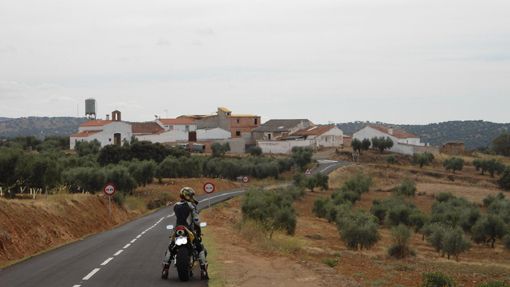
Los Rubios
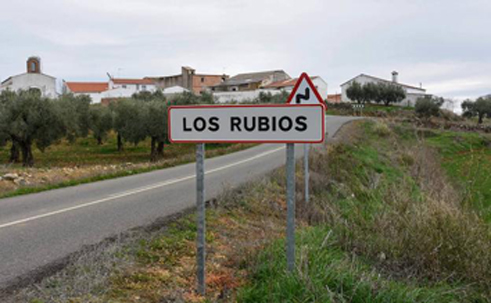
I have just listened on the radio to a spaniard, Antonio Carrizosa, who is 62 years old and lives, in this abandoned small village, since 12 years ago, with his wife and his sister-in-law. They are the only inhabitants of this small village and they live in a house, that Antonio recomposed, without having any notion of masonry.

Antonio Carrizosa Vizuete

Antonio´s house
This small village, located almost on the border of the province of Córdoba, was the dreamed place, for this Spaniard from Extremadura, determined to recover, brick by brick, the place where the childhood of his parents passed.
Antonio says that it is a little paradise in the middle of nowhere. “I am surrounded by oaks” –he says--. Just before entering "there is a hole where a car fits". The garbage truck and the mail do not arrive, "I receive the letters in Azuaga, in a friend's house". There are no bars. Nor church, "for what?, I have direct connection with God, without intermediaries", he jokes. The old church of San Bartolomé became a hostel, but it is in disuse.
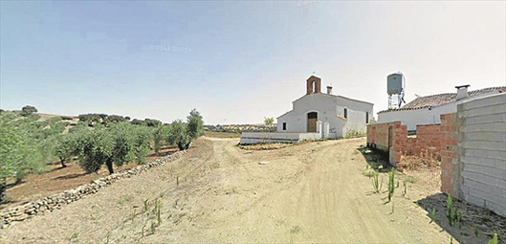
The church of San Bartolomé from afar
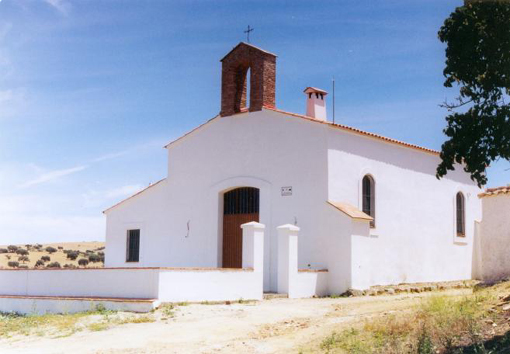
The church of San Bartolomé close up
“I proposed to the mayor that I would manage it, it seemed good, but it stayed there, he has not told me anything else. I water the plants in front, so they do not dry out”. He speaks with the calm of those who live without a clock, without hurry, who has time to contemplate that landscape, which surrounds and falls him in love every day.
Antonio tells that his parents grew up in a nearby lead mine, of San Rafael, but they went to Los Rubios, because it was there where there was a teacher, who taught them how to read and write.
In its good times, the small village was around 90 inhabitants. But they left. And the houses began to fall. And Antonio was left with the regret of seeing how the place, where part of his parents' childhood had passed, was lost.
Antonio worked in a tax consultancy, in Zafra. At 28 years old, a pension plan was made, that allowed him to retire soon and start fulfilling his dream: recover the small village.
He has been buying and, brick by brick, restoring some of the old houses. "They have more than a hundred years; in some of them, they have been able to take advantage of the foundations, in others they have not". Right now, a dozen are inhabitable, practically half of the village. "People know what I am doing and they bring me old furniture that nobody wants anymore. These are not pharaonic works and I use recycled materials", he explains.
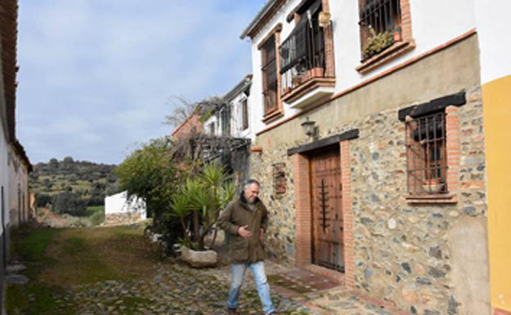
A restored house
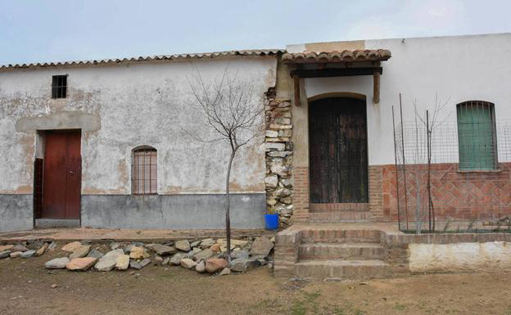
Half restored house and the other half without restoring
He has not got rid of the bureaucratic obstacles. He alleges that, when he thinks that it is necessary, he asks for a building permit (to the municipality of Granja), but they do not answer him, so he bets on the figure of "administrative silence", which he considers synonymous with an affirmative answer and he moves on. He also names the streets, for example, the Wind street, where he likes to sit and read.
All homes have solar panels for electricity. And to the outskirts, there is a well, that connects with a deposit and that allows them to have running water, which is not potable.
Antonio says that “There is a family from Valencia, who spends here seasons. And another one from Seville“. They keep roots with the village and have joined Antonio's project, so that Los Rubios can come back to life. He has also involved several friends. When they all get together, they add up to 40. "But there are times when we go to the beach and the animals are alone, and José (from another village) comes to take care of them".
The affection transmitted to him, especially by his mother, feeds the effort of Antonio in order that Los Rubios flourishes. And he has a future project: that this place can live off rural tourism.

A rural house close to Los Rubios
I hope that you can go to this lovely small village, to check its wonderful peace and meet Antonio Carrizosa, as the writer Virginia Mendoza did it a short time ago. She was touring Spain, looking for semi-abandoned villages and found this small village. She met Antonio and, a few days later, published his story, on the Internet, and several radio stations called her to ask who the person is, who left everything to repair houses, where there was practically nothing left. They were struck by the fact that the task, that was proposed by this neighbour of Badajoz, did not have a productive or speculative goal, but rather a therapeutic one.
Antonio remembers his mother: "She talked to me, with a lot of love, about this place, how she learned to read at school, which they built stuck to the church, about her life in the countryside. It was funny the story, that my mother told me about a donkey, who leant out, when there was dancing and his braying took the rhythm of the orchestra", Antonio remembers it, laughing, before changing the tone. "Then, this was empty, I suppose that the last inhabitant left twenty years ago, I always wanted to have a house here and I saw that it would be impossible, that this would disappear, that animals would enter the house and this would become ruins, so I decided to rebuild the small village with my hands".
But, despite his love for this land, Antonio is not a neorrural --because he has always liked the countryside--, he is neither a hippy nor a hermit --because he likes to go shopping in Badajoz, to see museums in Madrid, to listen a Jazz concert, in Córdoba, and to buy in Mercadona of Azuaga ... But he almost does not watch TV nor does he like football, although he does have Wifi to be informed--.
Azuaga is 14 kilometres from Los Rubios; but the small village, inhabited, closer to Los Rubios is Cardenchosa.
Antonio says: "All this has made me relive mentally and physically, I do not need to play sports, because when I carry stones and wood, one becomes strong". Indeed, Antonio has agile movements and fluent conversation. You can see him cutting a log of wood and talking to his friend, Fernando Pulgarin, in the image below:
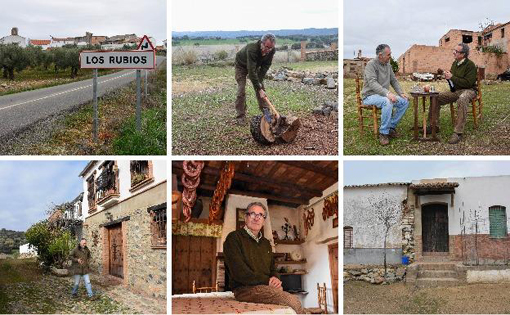
Antonio Carrizosa with Fernando Pulgarín
Antonio recycles everything he can. He has an old Seat Panda and, with it, he gathers everything that people give him; He says: "I take advantage of everything, people know me and they tell me they are going to throw away their house and I go there and pick up the doors, I clean them up and reuse them, or I pick up stones --to decorate the floor--, bricks , a handrail .... ".
Fernando Pulgarin is 53 years old, he is a topographer and has a good friendship with Antonio, because they both have a similar background and character; Fernando says: "I grew up in this area, but I worked in highways and large projects, for a company, in Madrid and I did not like the life I had, so on March 31, 2005, I asked for the account, in the company, and I left. I have two daughters: one 16 years old and another 18 years old, so I can not stop working, but I have become autonomous, I live in Azuaga and I am happier here"; this is what Fernando says, in a little house rehabilitated by himself.
These two friends are still thinking about how to improve the small village of Los Rubios.
Well, I hope that you will like this article and hope that you will can to visit this lovely place.
Until my next post, kind regards,
Luis.
Sponsored by Costaluz Lawyers.
Please click below:

 0
Like
Published at 12:36 PM Comments (0)
0
Like
Published at 12:36 PM Comments (0)
A team of Spanish researchers has discovered a chemical compound to prevent Alzheimer's
Monday, June 25, 2018
Resveratrol, a compound found naturally in fruits such as grapes or some plants, has protective effects against cellular alterations, that occur in Alzheimer's disease, according to researchers from the Centre for Biomedical Research in the Epidemiology and Health Network Public (CIBERESP) and the Institute of Biomedical Research of Barcelona of the CSIC and the Institute of Biomedical Research August Pi and Sunyer (IDIBAPS).

Resveratrol
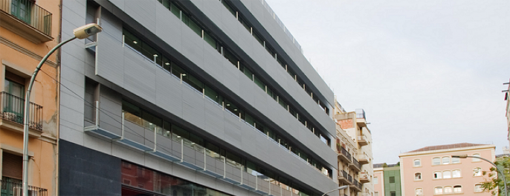
IDIBAPS
In the work, carried out with transgenic Alzheimer's mice and published in the journal Molecular Neurobiology, the scientists added resveratrol to the diet of two groups of rodents, a control group and another with Alzheimer's pathology.
In both cases, an improved response was observed in learning, although in the case of those affected by Alzheimer's, there was an effect of protection against memory loss and against the pathology. Likewise, the scientists observed an increase in proteolysis activity, that is, the mechanisms of abnormal protein degradation such as beta-amyloid and hyperphosphorylated tau, which are the main causes of neuronal death.
In this way, the scientists observed that rodents that had taken resveratrol, in their diet, had, on the cellular level, an increase in the enzyme neprilysin, which degrades beta-amyloid protein, and, on the other hand, an increase in proteosome, a protein complex that breaks down abnormal proteins. In the same way, they discovered in the cells of rodents a decrease in the beta-secretase enzyme, that initiates the formation of beta-amyloid.
"In addition, in the work we have verified that resveratrol activates the molecular pathway of neuroprotection of sirtuin 1", explained the researcher of CIBERESP and first signatory of the study, Rubén Corpas, to ensure that this controversial mechanism of action of resveratrol contributes, "without a doubt", to the improvements detected in the control and transgenic mice.
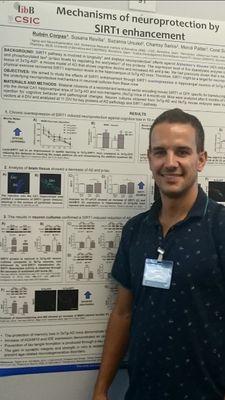
Ruben Corpas
In the same way, the CSIC researcher leading the study, Coral Sanfeliu, has pointed out that the results open the door to consider resveratrol, or the derived compounds that are being synthesised to improve bioavailability, as preventive or decelerator of the Alzheimer's disease.
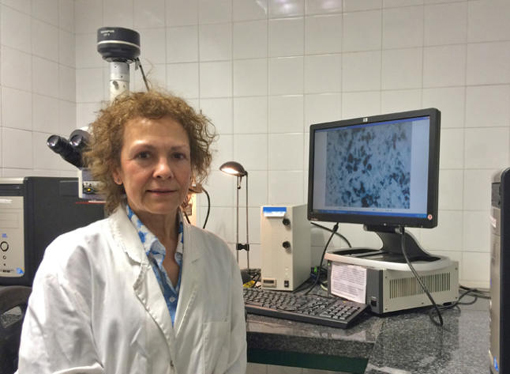
Coral Sanfeliu
"Resveratrol has reversed the Alzheimer's of mice, but the disease in humans is much more complex and severe and could hardly be curative, like many other experimental therapies, that have not been active when they reach the tests in patients. Is a long way away to find an effective drug against Alzheimer's, maybe it will be a mixture of drugs”, the researcher added.
Finally, the experts, who have counted on the help of scientists from the University of Barcelona and the CIBERNED (CIBER of Neurodegenerative Diseases), have highlighted that the activation of the mechanisms of proteolysis and sirtuin 1, in healthy mice, is a "very significant" fact, since it shows that it is possible to acquire a certain "brain resilience", against future neurodegenerative pathologies.
But, aside from these chemical compounds, I would like to recommend some foods to you, including Resveratrol; these are the following: Red bilberries, black bilberries, black grapes, red wine and white wine.

Foods with Resveratrol
Well, I hope that you will like this article.
Until my next post, kind regards,
Luis.
Sponsored by Costaluz Lawyers.
Please click below:

 1
Like
Published at 10:31 AM Comments (2)
1
Like
Published at 10:31 AM Comments (2)
Serendipity: the first Spanish candle with surprise
Wednesday, June 20, 2018
It is said that "Today you will not sleep without having learned something new". And that is what has happened to me today: that I have learned a term that I did not know, "Serendipia", which means "Chance", "Fluke".
And Fluke was what found the protagonist of the story that I would like to tell you now: Cristina Acebal.
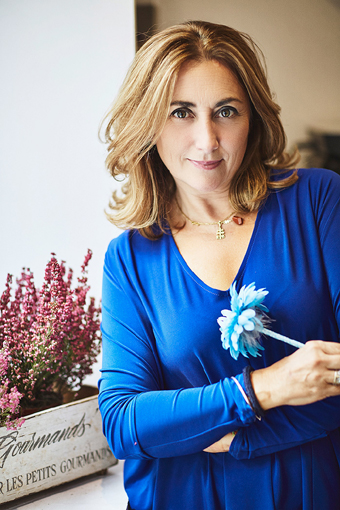
Cristina Acebal
Cristina partnered with a cousin of her to create an event company. One day, with the company already created, they organised a presentation with many candles --because both of them like candles very much--. Then they thought to create their own candles; but they knew that the market is full of them and they wanted to create special candles. Then, the first special thing was the name: “Serendipity”, which Cristina thought, remembering the movie of the same title. Serendipity comes from the term "Serendipity" --which, as I said before, means "Chance"--. In History, there are many cases of Serendipity: for example, Cristóbal Colón was looking for Las Indias and he discovered America. It was also discovered by chance: penicillin, velcro, Coca-Cola and post-it –this last was discovered when NASA commissioned a company with a paper with strong glue; but the paper took off and so the post-it was born--.


Cristina and her cousin thought that candles make people happier; and thinking about this, they decided to hide a surprise, in each candle, in the shape of a pendant, as an amulet. They chose 5 different pendants: a bee (as a symbol of abundance), a tree of life (as a symbol of wisdom), a pineapple (as good luck), a palm tree (as positive energy) and a cactus (as success).

Left to right: tree of life, palm tree, bee, cactus and pineapple
100% natural wax, double wick and 400 gr. of weight, the Spanish candle Serendipity smells of orange blossom, the orange blossom that announces spring, notes of neroli (oil extracted from the bitter orange flower) and petit grain and it ends with moderate notes of wood and musk. Candle and gift, (candle & gift), two in one, like the King cakes for Epiphany or the eggs kinder. The surprise is inside. A little patience while consuming, little by little, and a lot of magic. The silk cord, that wraps around the candle, will serve, then, to hang around your neck.

The silk cord for pendants
The price of the Serendipity candle is 39 euros, and it can be obtained through the website (www.serendipityspain.com). It is also sold on the website “Slow Love" (www.slowlove.es). A very original candle that, after its 90 hours of life, will leave you with a beautiful memory forever. Candles, by imitation of our Nordic, French or Belgian neighbours, who have been using them as an ornament for many years, are becoming a luxury item much sought after by Spaniards. Its tradition is millenarian, but its practical use has given way to a more aesthetic use. Carriers of light and aroma, the interior designers use them a lot to decorate and give warmth to their decorations. An atmosphere lit with candles always brings magic and, from that, Serendipity knows a lot. And if you have any questions, this candle has its own website, where it tells you everything related to the wonderful world of candles.
Well, I hope that you will like this article.
Until my next post, kind regards,
Luis.
Sponsored by Costaluz Lawyers.
Please click below:

 0
Like
Published at 11:55 AM Comments (0)
0
Like
Published at 11:55 AM Comments (0)
Another rich rich Spanish dish
Monday, June 18, 2018
Today I would like to share with you a very simple but very good recipe, by the prestigious Spanish Chef, Karlos Arguiñano: "Rice with artichokes and prawns".
These are the Ingredients (for 4 people): 300 grams of rice. 6 artichokes. 1 litre of fumet. 150 grams of prawns. 3 pear tomatoes. 2 leeks. 12 fresh garlic. 1 lemon. Extra virgin olive oil. Salt. Parsley.
To start, put a pan for cooking paella, with a little stream of oil. Peel and grind the leeks and fresh garlic, add them and let them poach well. Clean and cut 3 artichokes, add them and add salt. Rack the tomatoes and add them --I remove the skin and pips--. Cook everything for 5 or 6 minutes.
Add the rice --I always rinse the rice with cold water before, so that the grains do not stick--, soak it a little bit and pour the hot broth --To have the fumet, boil the raw prawns in water--. Cook it for 16 minutes. Put salt to your taste.
Peel the prawns, add salt and add them. Turn off the stove burner and let it sit for a couple of minutes.
Peel the rest of the artichokes and cut them into thin small slices. Fry them, in a pan with oil, and drain them on a plate covered with absorbent kitchen paper.
Decorate the paella with artichoke chips, a sprig of parsley and lemon.
And this one should be the result:
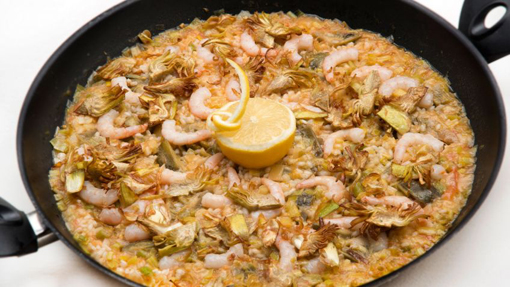
Rice with artichokes and prawns
Well, I hope that you will like this recipe.
Until my next post, kind regards,
Luis.
Sponsored by Costaluz Lawyers.
Please click below:

 0
Like
Published at 12:57 AM Comments (0)
0
Like
Published at 12:57 AM Comments (0)
Spanish researchers discover a method for the health of diabetic women
Wednesday, June 13, 2018
Researchers, at the Autonomous University of Madrid (UAM), have shown that maintaining a Mediterranean diet is associated with a lower risk of frailty, in older women with diabetes, after 28% of diabetics, with diet, had better results than those who did not follow it.

Mediterranean Diet
From the UAM, they have stressed the importance of this study, noting that diabetes accelerates the loss of muscle mass, something that is intensified by some drugs. Therefore, they added, people with diabetes are at increased risk of developing frailty, and any infection or new treatment can lead to a situation of hospitalization, disability or death.
The experts who signed the work have used data from 8,970 American women over 60 with a diagnosis of diabetes, whose case was followed for 22 years, identifying those who became "fragile".
Specifically, 28 per cent of the women, who maintained a pattern of the Mediterranean diet, suffered less risk of being fragile than those who did not follow it, as pointed out by the professor, in the Department of Preventive Medicine of the UAM, and first author of the study, Esther López-García. In addition, this beneficial effect was seen both in participants "totally healthy and robust and in those who already showed some sign of fragility”, she added.

Esther Lopez-Garcia
The director of the Department of Preventive Medicine and senior author of the study, Fernando Rodríguez Artalejo, recalled that the Mediterranean diet is nutritionally balanced and can be maintained over time, which also reduces the risk of obesity.
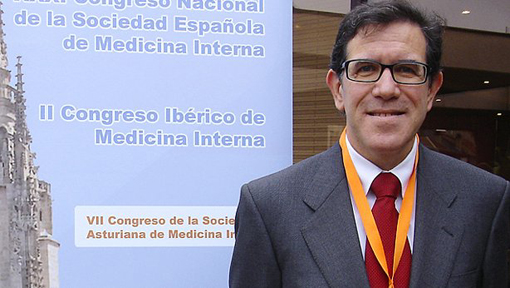
Fernando Rodriguez Artalejo
Well, I hope that you will like this article, such as I do.
Until my next post, kind regards,
Luis.
Sponsored by Costaluz Lawyers.
Please click below:

 0
Like
Published at 9:34 PM Comments (1)
0
Like
Published at 9:34 PM Comments (1)
Spanish Social Centre to live the elderly
Monday, June 11, 2018
Today, I would like to share with you a very interesting news: in Madrid there is a Social Centre for collaborative housing (named TRABENSOL) for the elderly), who do not want to live in residences for the elderly or with their families.
The Trabensol Centre began, in 2002, as a Cooperative of friends and acquaintances.
At first, they were a group of 85 seniors, who did not know how to name the Centre; but they did know that cooperative, self-managed, coexistence and collaborative were terms that perfectly fit the place where they wanted to live and that they themselves had designed, to grow old, and that does not fit the concept of geriatric residence, which we know.

The members of Trabensol
Trabensol is composed of 54 individual apartments, with common areas, which have a direct effect on the loneliness of the elderly.
This centre could attend to what is called "Senior cohousing"; but its Director (Paloma Rodríguez) says that all its members wanted to give it a Spanish name; this is how "Trabensol" came about.
The challenges were many: to find an adequate formula, to agree on what it had to have where they would live, to find the money and the land to build on. After several years searching, in 2006, they found them in Torremocha del Jarama (Madrid).
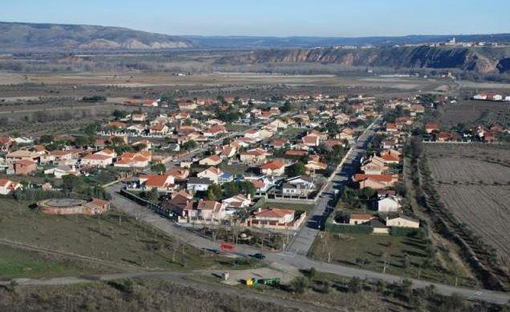
Torremocha del Jarama
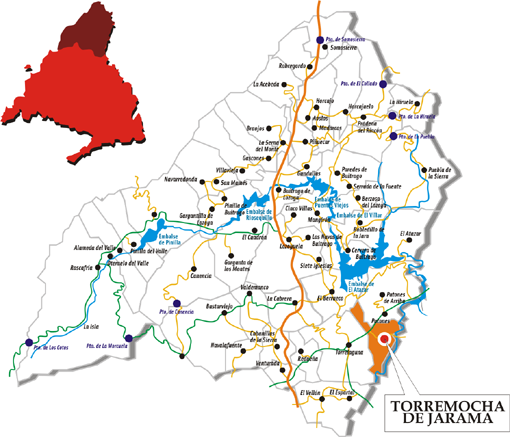
Torremocha on north of the Autonomous Region of Madrid
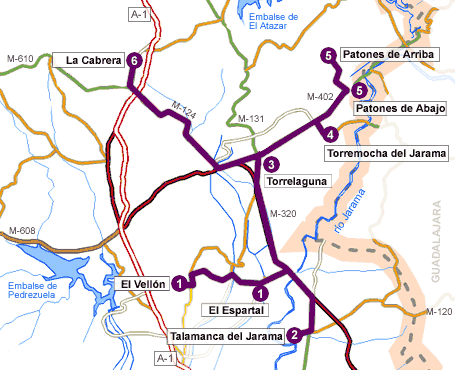
Torremocha on the map close up
But, at that time, more than 50 people, who could not buy or contribute the 154,000 euros, contributed by the 54 members, had already left.
A lot of perseverance and effort had to have, until 2013, finally could move to their new home: a building "bioclimatic, geothermal, with little environmental impact and low energy consumption", according to Jaime Moreno, former NODO (Newsreels and Documentaries) exredactor and now a resident of Trabensol.
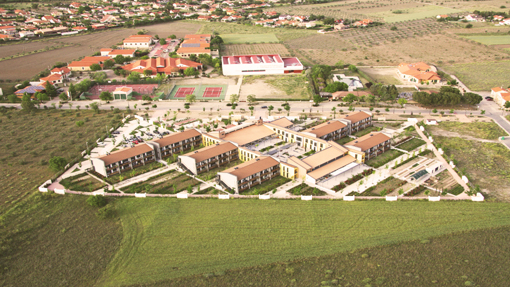
A view of Trabensol

The entrance to the Social Centre Trabensol
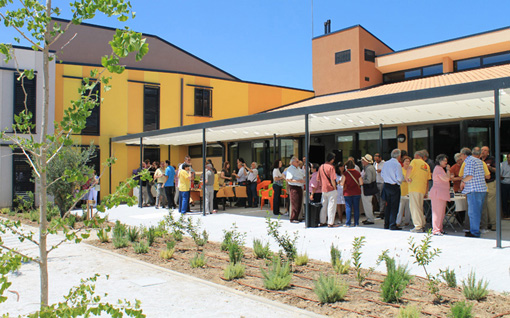
The entrance of the Centre close up
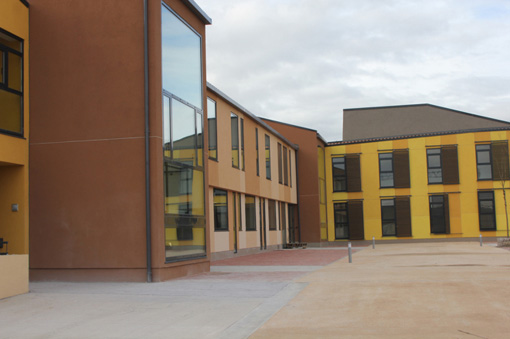
Another view of the main entrance of the Centre
Each one of the 54 apartments, with kitchen-living room, bedroom and terrace, is joined by a dining room, gardens, vegetable garden, greenhouse, library, gym, therapeutic bath and a multitude of rooms to meet, paint, renovate furniture, do yoga, pilates or chikung and even a space reserved for when they begin to fall into situations of dependency, with medical stretchers, that now are used to do acupuncture and massage.
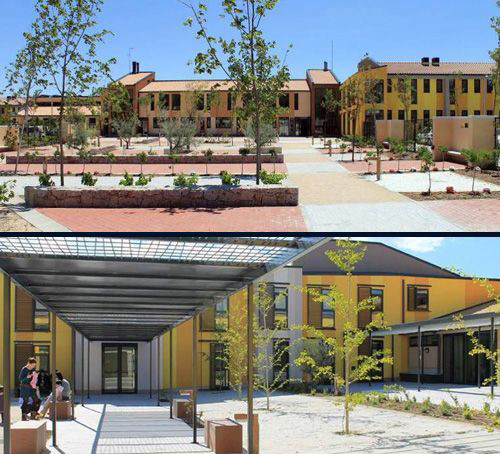
Apartments and the entrance of the Centre
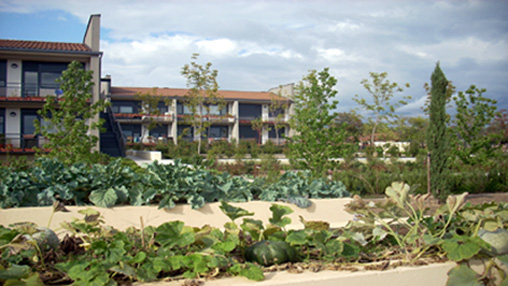
A vegetable garden in front of the apartments
Each apartment has its own small vegetable garden:
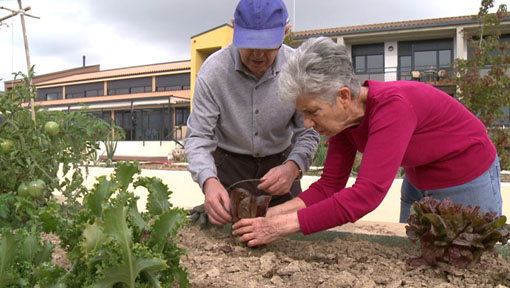
A small vegetable garden
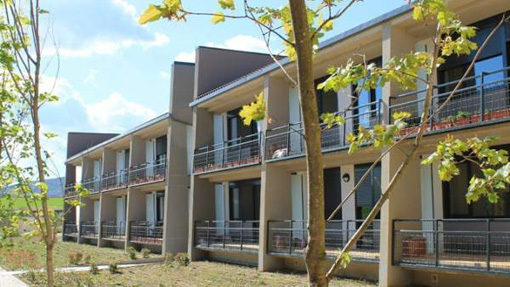
Several apartments

Inside an apartment

The kitchen of an apartment
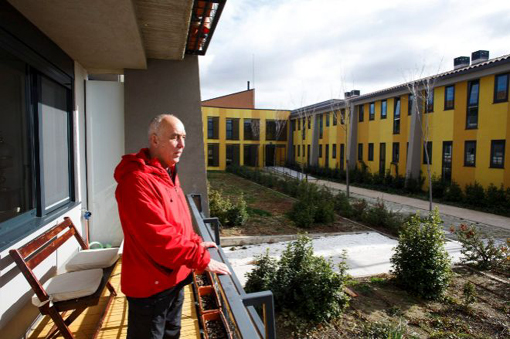
The terrace of an apartment
They themselves decided what they had to have, before putting into competition the project, that would be commissioned by an architects firm, because as Moreno says, they wanted to continue living "independently" and without conditioning their families.
"The idea is to share this phase of your life with others and, at the same time, generate mutual help systems, to solve the problems one has with age", explains the researcher and professor at the Open University of Catalonia, Daniel López.
This researcher is beginning a study to "map" all the initiatives of collaborative housing for older people, that are underway, in Spain, and that are "an alternative solution" to the traditional residence or to the loss of autonomy, that entails going to live with the family.
He wants to study what factors have allowed -or not- to develop and consolidate these initiatives and what impact it has had on the elderly and their environment.
He does not enter into speculations, but López points out that similar studies, from other countries, show that collaborative housing, in the elderly, "has a direct effect on combating loneliness" and "increases social participation and healthy ageing".
In addition, it could have an economic effect: it reduces hospital admissions and encourages the local economy.
This "social centre of coexistence for the elderly" of Madrid (Trabensol) --together with Los Milagros, in Malaga-- is a reference for an option, that draws attention to many who are beginning to see retirement, but also for the neighbours of the village, who are approaching all days to perform the free activities they perform: Nordic walking, read theater, cineforum, debates on current events, pilates, regional dances, yoga, meditation, etc.
In the centre reigns "the principle of solidarity and mutual aid", as described by the President, Paloma Rodríguez, and Jaime Moreno, and if someone has to go down to the doctor, there is always another person, who accompanies him –or her-- or before going to buy, they ask the neighbours if they need something.
Moreno describes his cooperative as "an exciting project", that they have created from "the debate and consensus" and that allows them to remain active.
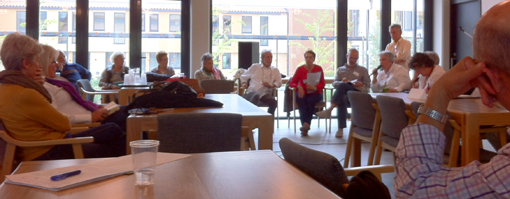
A meeting
Beyond the facilities and activities, the "best" is the human relationship and ageing accompanied, because by the problems they will have to face, "the feeling of being wrapped is something else".
In addition to the 54 apartments, Trabensol has several common areas: Cafeteria, meeting rooms, dining room, library, gymnasium, heated therapeutic bath, painting workshop.
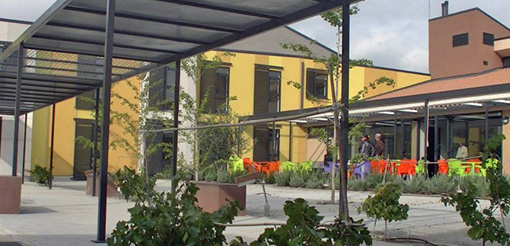
The terrace of the coffe shop

The social dining room
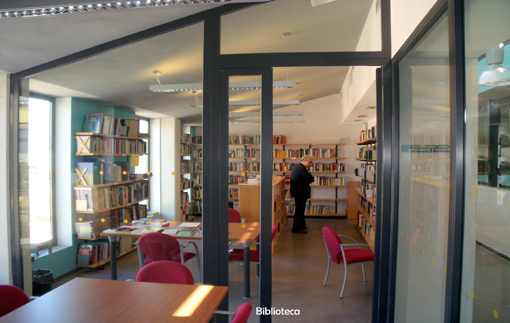
The entrance of the library

Inside the library
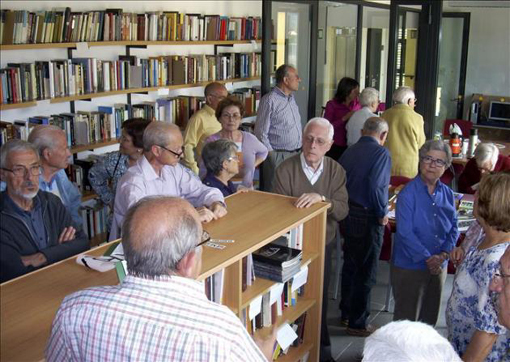
The elderly people searching a book

Gym and heated therapeutic bath
Well, I hope that you will like this article and hope that you want to create a centre similar to TRABENSOL.
Until my next post, kind regards,
Luis.
Sponsored by Costaluz Lawyers.
Please click below:

 0
Like
Published at 8:09 PM Comments (1)
0
Like
Published at 8:09 PM Comments (1)
Spanish doctors use a technique to prevent hair loss during chemotherapy
Wednesday, June 6, 2018
A few weeks ago, I watched an important news on tv and I would like to share it with you: "A public hospital in the north of Spain is using a technique to prevent hair loss during chemotherapy treatment".
A scalp cooling system, applied during chemotherapy sessions, prevents hair loss as a result of treatment, with an effectiveness of between 40 and 90 per cent, depending on the type of drug used.
Hair loss is one of the side effects of the most traumatic chemotherapy for cancer patients. Between 8 and 10 per cent of them refuse to receive chemotherapy or abandon it, Carmen Yélamos, a psycho-oncologist and specialist in clinical psychology at GenesisCare, said at a press conference.
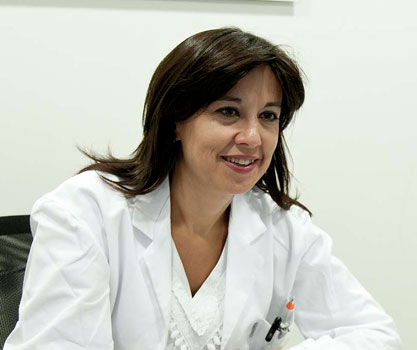
Carmen Yélamos
The procedure, which is also effective on eyebrows and eyelashes, is applied through a silicone cap, through which circulates a cooling liquid, that is connected to a machine that maintains the optimum temperature.

The silicone cap

The silicone cap applied to the head of a lady
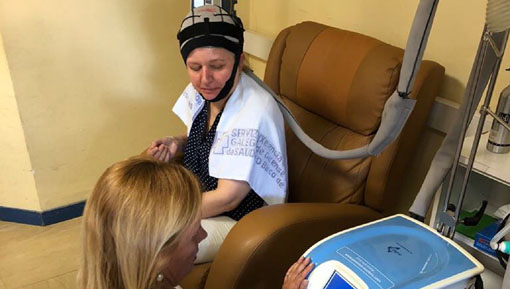
The silicone cap connected to the machine
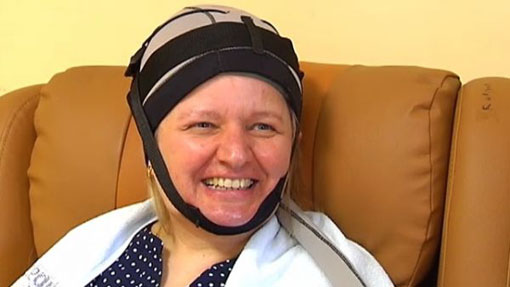
The lady glad with the new system
In this way, the scalp reaches a temperature of between 19 and 21 degrees, at the level of the skin, causing the toxic chemotherapy do not reach or do so, in a low percentage, to the cells of the hair follicle.
This causes a double effect. On the one hand, it reduces the blood supply by vasoconstriction of the blood vessels (partial closure) and, in addition, closes the cell membrane, to the passage of any toxic that reaches it.
"It produces a cytoprotection against chemotherapy", said the Dr. César Sebastián, president of Oncobel, the company that has implemented the system in Spain, called Paxman.

César Sebastián

The system PAXMAN
The procedure was invented, in Great Britain, in 1997, and it was refined until April 2017, when it obtained the certification of the FDA (Food and Drug Administration) of the United States, which admits its full efficacy and safety.
In Spain, it has been available since 2012, in some private hospitals and specialized centres, although it has also been applied in a public one, the Orense Hospital, through a foundation.
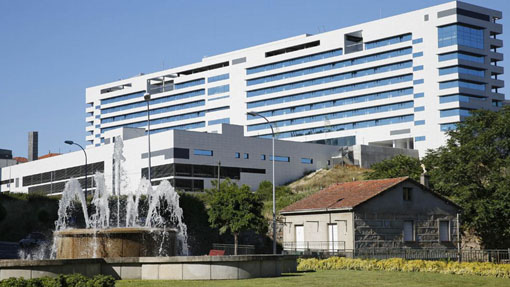
University Hospital Complex of Orense (South of Galice, North western Spain)
In those six years, almost 300 patients have been treated, of which 90 per cent are women and 10 per cent men, the latter over 60 almost all.
The Dr. José Luis González Larriba, head of the oncology section of the Ramón y Cajal University Hospital in Madrid, explained that hair is lost two or three weeks after starting the first cycle of chemotherapy and lasts up to six months after finishing.

Dr. Jose Luis Gonzalez Larriba
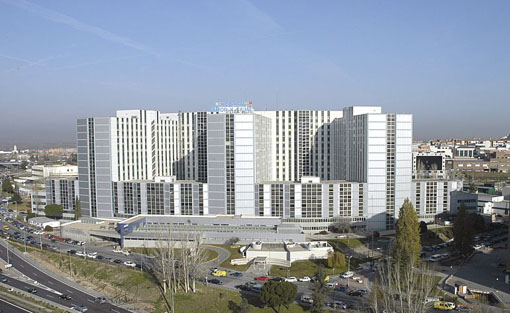
University Hospital Ramon y Cajal
The treatment increases the time the patient must remain, in the chemotherapy session, since the cap is placed approximately half an hour before the infusion of the drug and is maintained until an hour and a half, after finishing the process.
It is essential to start from the first session of chemo and can only be used in solid tumors. In the case of children, it is not applicable, since the type of cancer that they suffer is usually liquid (leukemias and lymphomas).
To be more effective, it is recommended that the hair is previously wet and it is very important that the cap is properly adjusted.
The Dr. González Larriba has assured that this procedure does not increase the incidence of metastasis in the scalp and does not decrease the efficacy of chemotherapy.
The loss of hair, as a result of chemotherapy, "is not an aesthetic problem, it is psychological", since "it can affect, during a year and a half of a patient's life, and can be devastating", warned the Dr. Escarlata López, chief of the radiotherapy oncology service of the Jiménez Díaz Foundation.
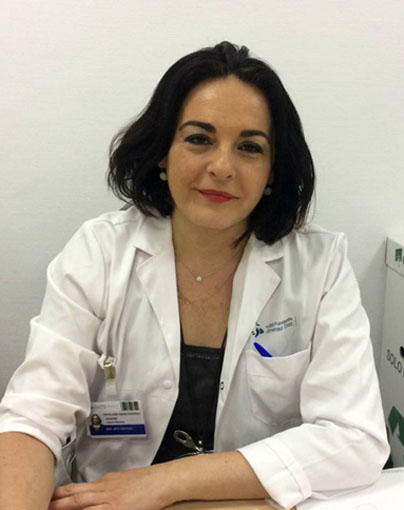
Escarlata Lopez
“The treatment costs no more than a natural hair wig and is not charged if it does not work”, the Dr. Sebastián assured.
Well, I think that it is a very important discovery, to improve the quality of life of millions of people, who suffer from cancer, throughout the world. I hope it can be used in all hospitals.
Until my next post, kind regards, Luis.
Sponsored by Costaluz Lawyers.
Please click below:

 0
Like
Published at 12:30 PM Comments (0)
0
Like
Published at 12:30 PM Comments (0)
Spam post or Abuse? Please let us know
|
|